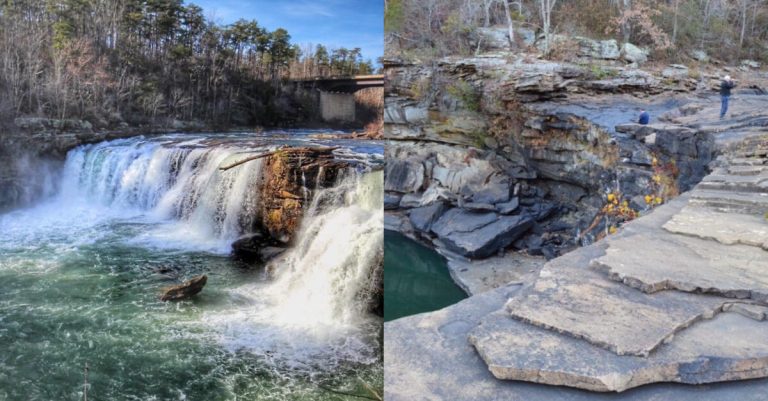Do you know where your water comes from? We went behind the scenes to find out
Reading time: 4 minutes
Sponsored

August is National Water Quality Month, plus it’s hot, so we thought it was the perfect time to go behind the scenes to learn where Birmingham’s water supply comes from. We got a tour of Birmingham Water Works’ Cahaba Pump Station and Shades Mountain Filter Plant. Here’s what we learned.
From the Cahaba to the tap: straight to the source of Birmingham’s water supply

Screens help direct living creatures back to the Cahaba. 
Fsh and turtles head back to the river by way of this chute.
The first part of getting water to Greater Birmingham residents starts at the Cahaba River, just off Sicard Hollow Road.
Massive pumps can pull up to 80 million gallons of water a day out of the river.
Computers continuously monitor the water level below the dam at Lake Purdy, which essentially functions as a 5.5 million gallon reservoir.
Like a train conductor, Pump Station operators have the ability to open and close valves to pull water from different sources, including Blount County’s Inland Lake, if needed.
Every two hours, people take samples of the water to measure indicators like pH, conductivity, turbidity, dissolved oxygen and more.
They have the ability to begin treatment of the water at this stage, if necessary. Most of this happens at the Shades Mountain Filtration Plant, though.
Next to where the magic happens is the Cahaba Museum and Conference Center.
If you’re fascinated with how people back in the Works Progress Administration days managed to pull of huge public works projects, you need to visit this museum.
You’ll see original wooden water pipes, pictures of the Cahaba mine which used to power the pump station and an incredible 360 degree indoor crane.
Want to be part of the action? BWWB is hiring.
The Shades Mountain Filter Plant is where they get the water ready for us

“Everything we do here is to take our water from non-potable to potable, from the source to the tap.”
Tim Harris, Senior Superintendent, Shades Mountain Filter Plant
If you are an engineering or chemistry kind of person, you really need to see the Shades Mountain Filter Plant to believe it.
The plant is arranged as a series of stations where different parts of the water treatment and testing process happen.
There’s even a $3M trailer equipped with its own mini-chemistry lab for the engineers who conduct research at the plant.
At every stage, the water is monitored continuously from the time it comes out of the water to when it leaves the plant.
Fun facts about Birmingham’s water supply

“We have really great water. We’ve had a lot of breweries and distilleries tell us they have selected this area specifically for the water.”
Jeff Thompson, Assistant General Manager of Operations, BWWB
- Every year, BWWB treats 40 billion gallons of water.
- In addition to the Shades Mountain Filter Plant, there are three other treatment plants that pull water from various points along the Black Warrior River.
- In total, approximately 770,000 people drink water produced by the Birmingham Water Works Board.
- BWWB has 52 water tanks across the Greater Birmingham Area. The Shades Mountain Filter Plant oversees 29 of them.
- All four of BWWB’s filter plants have won the Award of Excellence from the Alabama Water and Pollution Control Association in 2021.
Want to be part of bringing water to Birmingham? BWWB is hiring at all skill levels now.
Sponsored by:






